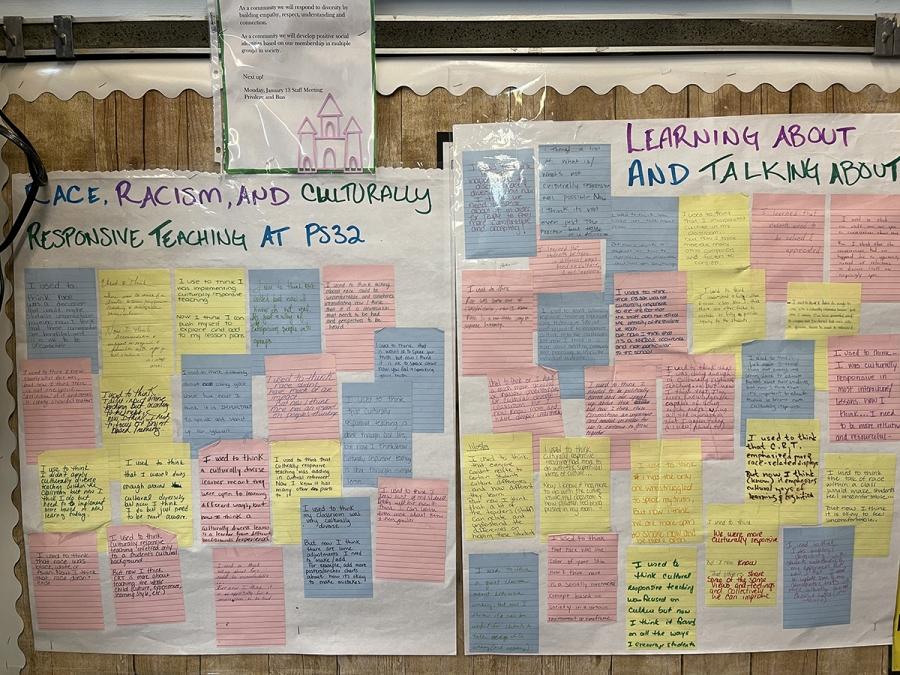Sixteen years ago, when I was a student teacher in an affluent suburb of Boston, I witnessed a lesson I’ve never stopped thinking about. My class of (largely white) 1st-graders was horrified to learn that Ruby Bridges faced hostility and opposition as the first Black student to attend an all-white school in Louisiana. They pointed at the lone Black student in their own class and exclaimed, “But we let Vanessa come to our school!”
They were repulsed by the idea of racism, but they had also quietly internalized something consequential about how their school functioned: They understood that even as 6- and 7-year-olds, they were the ones in a position of power.
Addressing issues of race, culture and identity in the classroom isn’t easy. But that moment with those 1st-graders convinced me that it’s crucial. In the 1990s, educational researcher Gloria Ladson-Billings introduced the term “culturally relevant pedagogy” to describe an approach to teaching that “empowers students intellectually, socially, emotionally and politically by using cultural referents to impart knowledge, skills and attitudes.”
In other words, teachers should examine and encourage ways in the classroom to imbue their students with a sense of their own identities — and allow that sense to inform their teaching.
“It can be something as extremely simple as learning how to pronounce a child’s name correctly,” says Roslyn Odinga, the director of professional learning for the UFT’s United Community Schools program. “Some teachers will say, ‘I’ll just call you such-and-such,’ or they’ll make up a nickname. When I hear that, I think they’re stripping that child of their identity quickly and fast. Children need to be able to identify themselves as who they are.”
That tenet can mean taking an inventory of your classroom library to be sure your students’ books reflect their cultures and backgrounds — all year long, not just during Black History Month or other special times of the year. It can mean infusing subject-matter lessons with culturally relevant pedagogy — like using the book “Count Your Way Through Yemen” in math, or studying a species native to a particular region in science.
“We’ve worked so hard on revamping our classroom libraries to make sure they’re culturally relevant so students can see themselves in the books,” says Samantha Yustman, an instructional coach at PS 32 in the Belmont section of the Bronx. “When a student is able to say ‘I can really relate to this,’ that goes a long way toward helping them make connections and making them eager to learn more.”
But while culturally relevant pedagogy may start with acknowledging students’ backgrounds and identities, it shouldn’t end there.
“The greatest respect we can give any student is to look at them on an individual level. But the question has to be: Are we a school that is going to be about symbolic representation and superficial spectacle, or are we about fundamental transformation and delivering substance on a daily basis?” cautions Eddie Argueta, an English as a new language teacher at PS 32 and a member of the school’s “equity team.”
According to Ladson-Billings, teachers who use culturally relevant pedagogy focus on three things:
- Student learning, including problem-solving and reasoning;
- Cultural competence, or helping students appreciate their own culture and others;
- Critical consciousness, or the ability to recognize and analyze real-world problems and inequalities.
“A hallmark for me of a culturally relevant teacher is someone who understands that we’re operating in a fundamentally inequitable system,” Ladson-Billings says. “And that the teacher’s role is not merely to help kids fit into an unfair system, but rather to give them the skills, the knowledge and the dispositions to change the inequity.”
To do this, PS 32 teachers look for opportunities in their curriculum to encourage students to think critically about what they’re learning.
“Many students might believe that school is copying down what the teacher says and repeating it. But we want our students to not only be able to process facts but to interpret them as they perceive them,” says Argueta.
For many teachers, becoming a culturally responsive educator begins not with a change in how they teach but with a shift in their own mindset. At PS 32, monthly professional learning sessions around equity “have put us in a constant state of reflection,” says Argueta.
Teachers have examined the long shadow of racial inequity in education and have discussed facing biases in their own families.
“To sit in silence with it perpetuates the silence that has muted so many of our students’ voices in the past,” says Argueta. “We understand that teachers might experience moments of discomfort when we’re having this dialogue, but we have to be brave together.”
